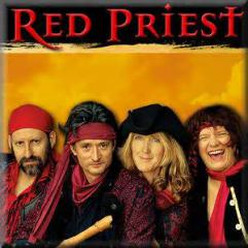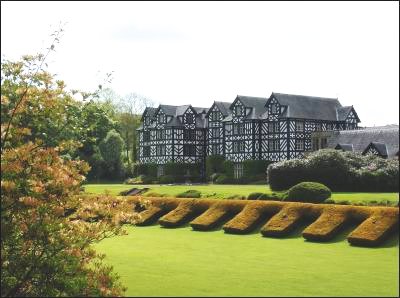Stolen material ...There was the usual plundering of previous composers or compositions, of which even such luminaries as Handel were guilty. Not surprising, this, given that composers in the Baroque period were expected to produce new pieces with much greater frequency than was the case later, when composers and musicians became Artists instead of Artisans. We could, after all, refer to it more kindly as "recycling"!Stolen names ...There was also the piracy of a name - it was certainly news to me that the famous Adagio of Albinoni (1671-1751) was in fact written by one Remo Giazzotto (a musicologist) in the 1940s. In the Baroque period it was apparently not uncommon for unscrupulous publishers to claim that a recent publication was written by a much more famous composer than was actually the case, in hopes of increased sales. Maybe that is what gave Signor Giazzotto the idea...Piracy on the High Seas ...Then, there was Piracy on the High Seas - no less than two storms (one by Simonetti, and one by Vivaldi), and an astonishingly atmospheric "Senti lo mare" by Tartini (wind noises provided by a recorder traversed), a pirate dance, and A Day in the Life of a Pirate, compiled and arranged by the group's harpsichordist, Howard Beach, from the works of Francois Couperin.
|
The concert ...From the moment the piratically-clad performers appeared, this was clearly going to be an Occasion - Red Priest arrange the music for their own small forces (only four, although with the variety of instruments at his disposal, Piers Adams is a host in himself!), and bring out to the full any atmospheric directions or special effects that the composer may have thought of.
The audience - packed to capacity for this "Family Concert" in the Music Room at Gregynog - were also treated to a Caribbean reading of the Largo from "Winter" of Vivaldi's Four Seasons as an encore. Given a little more room to move, it would have made a fantastic Rhumba - anachronistic, admittedly, but spectacular nonetheless. Clearly, those who prefer their music "safe" and tamed will find such groups as Red Priest downright intimidating, but as Piers Adams pointed out in the programme notes, the original Baroque composers were a colourful crowd, and scandal was never far away. I find that an exhilarating performance such as this will often reveal facets of the music I never saw for myself, especially given the very considerable musicality and great scholarship that underpins their swashbuckling. This was a wonderful way to spend the afternoon! |


 Suggest a change ( <--
What does this mean?) /
Send me email
Suggest a change ( <--
What does this mean?) /
Send me email